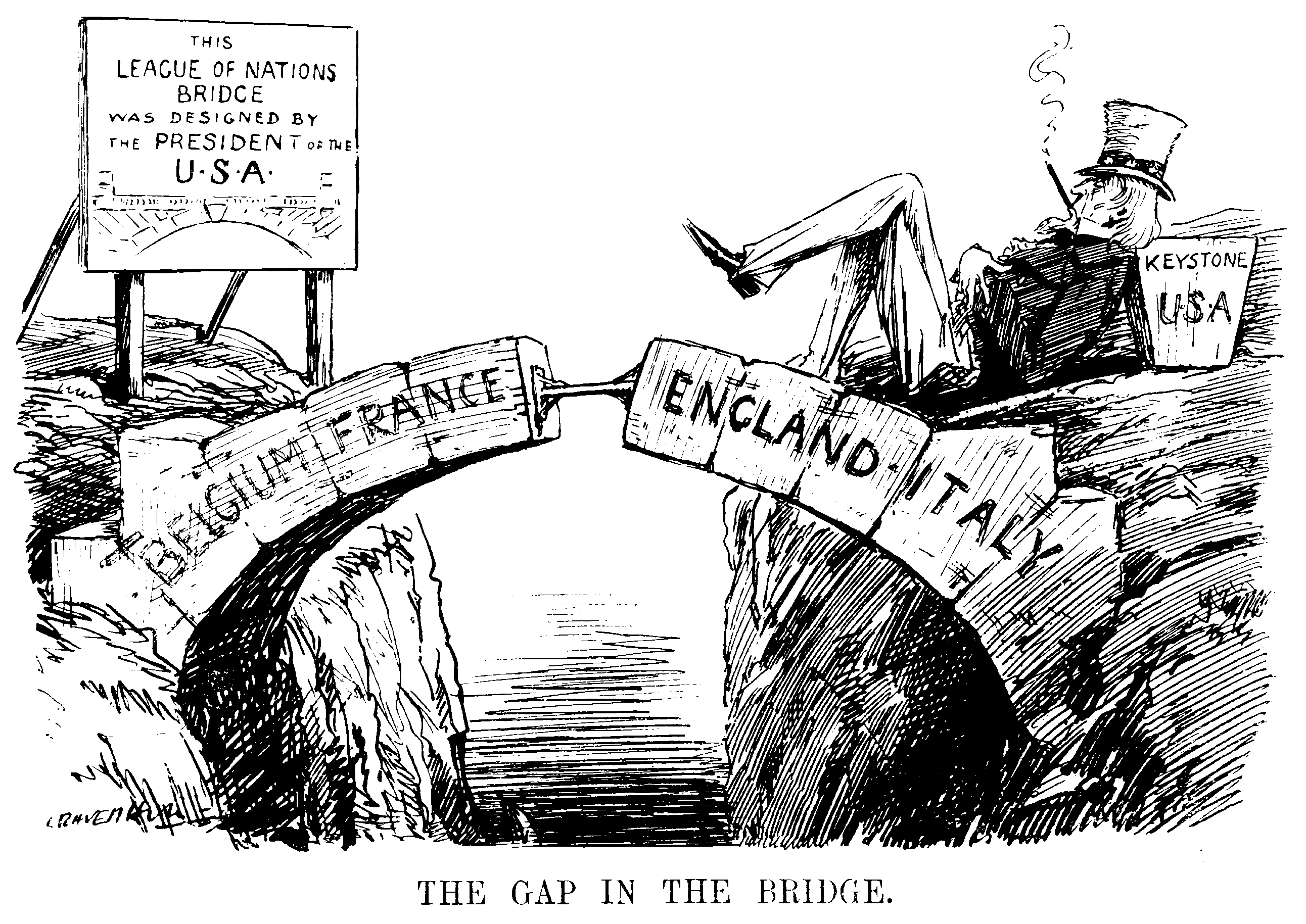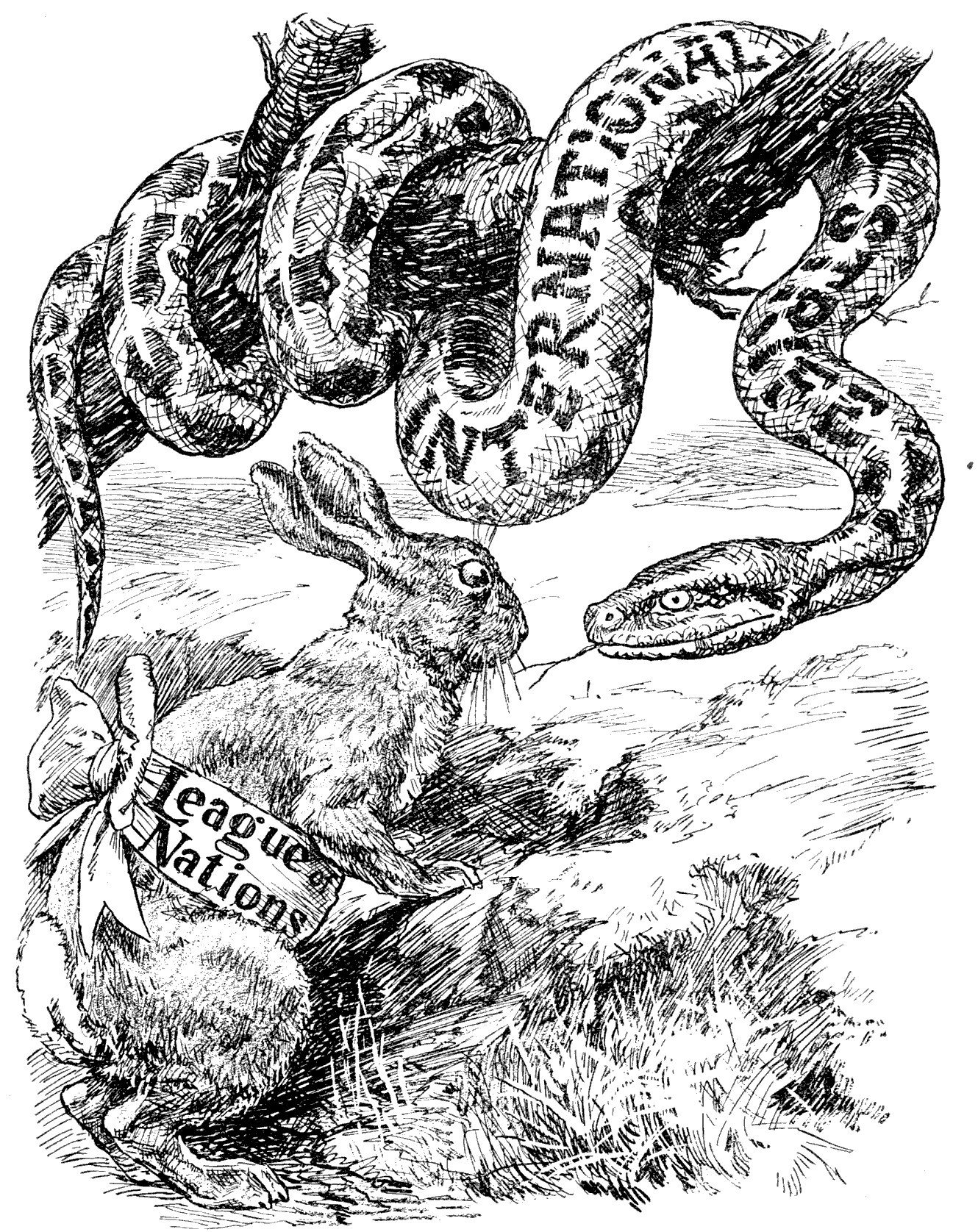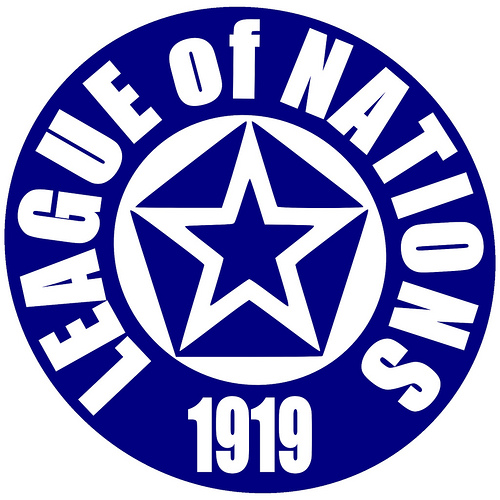Wilson: My Work is Done, Heads for Home.
Not So, Say the Allies.
What About the Monroe Doctrine?
Special to The Great War Project
(2 March) By mid-February a century ago, the first draft of the peace treaty is ready and President Wilson “is delighted.”
So writes historian Margaret MacMillan. The main outlines of the League of Nations are in place. They include “a general assembly for all members, a secretariat and an executive council where the big Five would have a bare majority.”

League cartoon, Bridging the Gaps
According to MacMillan, “There would be no League army and no compulsory arbitration or disarmament.”
“On the other hand,..
..all League members pledged themselves to respect one another’s independence and territorial boundaries.”
“Because the Great Powers worried that the smaller powers might get together and outvote them, there was also a provision that most League decisions had to be unanimous.” As a result, there was fear among the supporters of the League that this would render the League ineffective.’’

Wilson’s role.
“Germany was not allowed to join right away,” MacMillan reports. “The French were adamant on this, and their Allies were prepared to give way. Indeed, Wilson was all for treating Germany like a convict in need of rehabilitation.”
“The world had a moral right to disarm Germany and to subject her to a generation of thoughtfulness.”
And so Germany was to be in the curious position of agreeing in the Treaty of Versailles to a club it could not join.
“Both the British and the Americans came to think this rather unfair,” writes MacMillan.
“The covenant,” she reports, “also reflected several other causes dear to internationalists and humanitarians. It contained an undertaking that the League would look into setting up a permanent international court of justice, provisions against arms trafficking, and slavery, and support for the spread of the International Red Cross.”
“It also established the International Labor Organization to work for international standards on working conditions.”
On February 14th one hundred years ago, President Wilson presents the draft of the League covenant to a plenary session of the peace conference. MacMillan reports..
“the members of the commission had produced a document, at once practical and inspirational, of which they were all proud.
“Many terrible things have come out of this war,” Wilson said, “but some very beautiful things have come out of it.”
That night Wilson leaves Paris for the United States “confident that he had accomplished his main purpose in attending the conference.”
The covenant was not quite finished though.
Historian MacMillan reports: “The French still hoped to get in something about military force; the Japanese had warned that they intended to introduce a controversial provision on racial equality. And the mandates over the former German colonies and the Ottoman Empire still had to be awarded.”
“There was also the tricky matter of the Monroe Doctrine underpinning U.S. policy toward the Americas. Would the League have the power, as many of Wilson’s conservative opponents feared, to override the doctrine? If so, they would oppose the League, which might well lead to its rejection by Congress.”
MacMillan reports: “Although Wilson hated to make concessions, especially to men he loathed, he agreed to negotiate a special reservation saying that nothing in the League covenant invalidates the Monroe Doctrine.

Last weekend on C-SPAN3 I saw an interesting talk by Garrett Peck, author of the new book, “The Great War in America: World War I and Its Aftermath”. Peck’s a much bigger fan of Wilson than I, but his book sounded interesting.